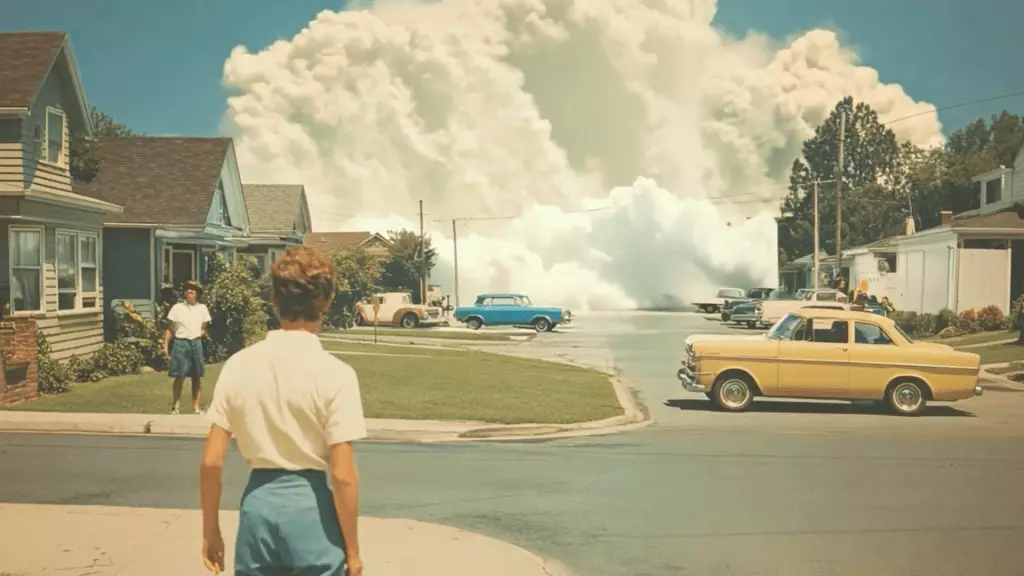In a world where technology often outpaces our comfort levels, Jacob Adler’s mesmerizing 9-minute film, *Total Pixel Space*, recently clinched top honors at the AI Film Festival held at New York’s illustrious Lincoln Center. As the growing influence of AI enmeshes itself deeper into the very fabric of creative expression, this event serves as a bold testament to how technology can redefine not just the process of filmmaking, but our understanding of artistry itself. Backed by the AI powerhouse Runway, a company with a staggering valuation exceeding $3 billion, this festival is a beacon of change in an industry ripe for reinvention.
The success of this festival, now in its third iteration, is not merely numerically significant; it’s a cultural phenomenon. Runway’s CEO, Cristóbal Valenzuela, pointed out that while 300 submissions graced the festival in 2022, that figure skyrocketed to 6,000 this year, showcasing an eager global community of filmmakers. Valenzuela’s assertion that “AI is everywhere” is not hyperbole; it’s a reflection of tectonic shifts occurring in our cultural landscape. The sentiment that AI might represent “the most important technological shift any of us has seen” captures both excitement and trepidation, opening a Pandora’s box of ethical questions and aesthetic possibilities.
A Renaissance of Creativity or a Dilution of Talent?
However, should we be celebrating this surge of AI-infused creativity, or is there an insidious undercurrent diluting the essence of human art? The ten finalists at the festival displayed a variety of visual styles that ranged from the dreamlike to the startlingly surreal. While many celebrated the newfound freedom offered by AI, others voiced concerns that the intrusion of such technology risks overshadowing the authenticity of human emotion in storytelling.
Take, for instance, the runner-up *Jailbird* by Andrew Salter, which eschews flashy AI enhancements in favor of a documentary style that tells a poignant story of an initiative pairing chickens with prisoners. It’s a project that eloquently underscores the power of human connection—a poignant reminder that while AI can enhance our tools, it cannot replicate the emotional intelligence of shared experiences. If filmmakers begin to rely too heavily on AI-generated concepts, we may find ourselves at the precipice of art that is technically sound but resonantly hollow.
The Liberation of Boundaries
Steven Ellison, also known as Flying Lotus, took to the stage at the festival to expand on the transformative influence of AI, stating, “I don’t like walls and boundaries and gatekeepers.” His words resonate deeply in an industry often characterized by exclusivity and stringent norms. The allure of AI’s “f–k around and find out” approach signifies a thrilling shift toward spontaneity and exploration. Film no longer has to emerge from a singular vision, but can flower from a fusion of randomness and innovation.
This liberating ethos fosters a more dynamic and inclusive environment, encouraging creators to explore uncharted territories in their storytelling. Filmmakers are no longer constrained by their technical skills or resource limitations; they can bring concepts to life that might have previously remained dormant in their minds. AI simultaneously serves as a partner and a canvas, creating possibilities that were once inconceivable.
Unraveling Ethical Dilemmas
Yet, as we bask in the glow of newfound opportunities, it’s crucial to confront the ethical dilemmas presented by AI in filmmaking. Who owns the work produced by machine learning algorithms? Should AI-generated content receive the same accolades as that of human creators? The answers lie in the murky waters of intellectual property and the importance of recognizing and rewarding human input. The excitement surrounding AI should never overshadow the human heart that beats at the center of storytelling.
Our cultural conversation around machines and creativity is still young, much like the festival itself. As AI continues to grow in versatility and capability, we must tread carefully, preserving the human essence that gives film its soul. The integration of artificial and human creativity must be a dialogue, not a monologue—a partnership that respects the emotional fabric of art while embracing technological advancement. The road ahead may be fraught with challenges, but it is equally filled with spectacular promise.

Leave a Reply